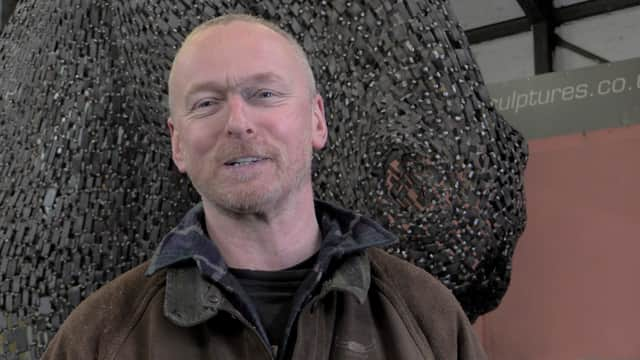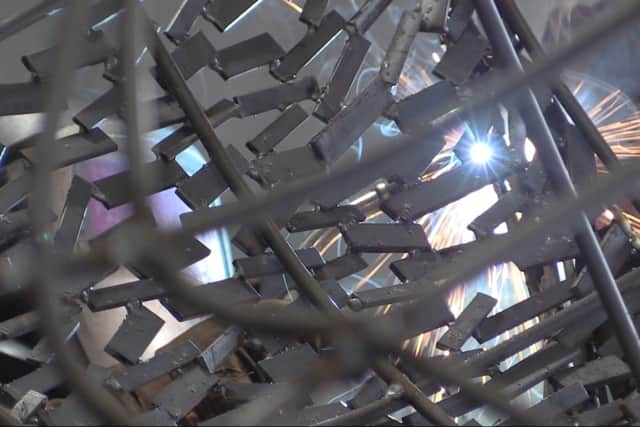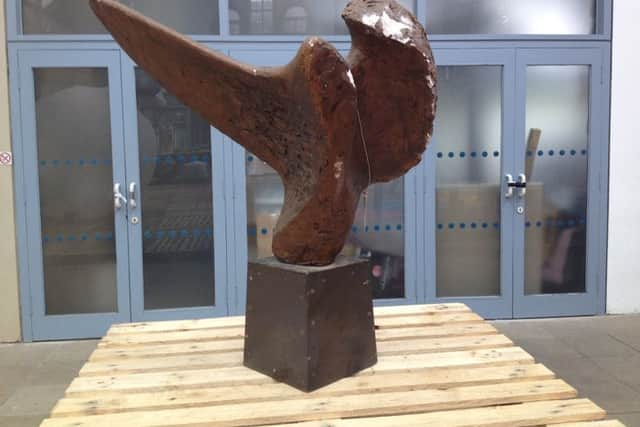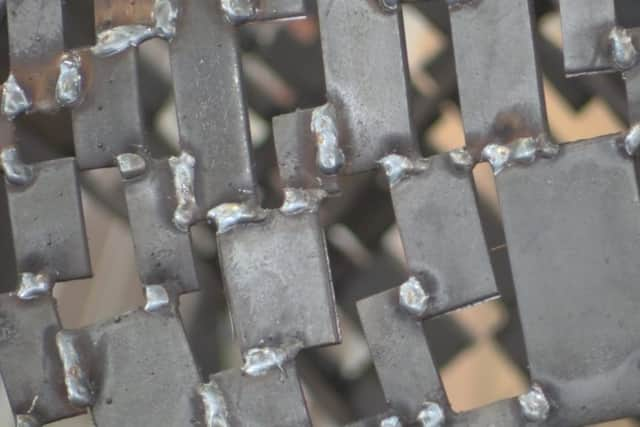Andy Scott: Kelpies sculptor inspired by his Glasgow youth


Glasgow sculptor Andy Scott is the man behind some of Scotland's most impressive public art, or as he likes to put it: "I make big beasties".
He's not wrong.
It's impossible to miss the 30m high Kelpies towering over the M9, Arria, ‘Angel of the ‘Nauld’ overseeing rush-hour on the M80 and the air spirit Stride pacing towards Clackmannanshire's Ochil hills. His Scottish sculptures are spread far and wide, but most have found a home in a public space.


Advertisement
Hide AdAdvertisement
Hide AdThe style he is best known for, featured in the majority of his works, is the gap-toothed plates of steel, pieced together in their thousands to play with the light in the sculpture's completed form.
To understand how he arrived at adopting this particular style, he takes us back to his earliest influences while growing up in the 1970s.
Born in Glasgow 1964, Andy’s childhood was typical of many young boys growing up in Scotland.
“I was always interested in art and making things,” he tells me, “but otherwise I think I was just like any other kid.”


As he got older he admits he turned into “a long-haired teenage headbanger”, spending all the money he had on concerts at the Apollo theatre.
Long before he entered the Glasgow School of Art as a student, he used to attend weekend classes for drawing and sculpture, but eventually leave the art school in 1986 with a BA Hons in fine art sculpture.
Andy welds small plates of steel to the frame of a new sculpture
Advertisement
Hide AdAdvertisement
Hide AdTwo creative parents and a stack of Marvel comics were important influences on his creative streak in the early days, but it was a deep appreciation for the city around him that set him on his path, with a little push from his father.


“My dad always told me to look up at the architecture with it's amazing detailing and rich sculptural adornment,” he says.
“I guess all those Victorian and Edwardian figures and the skill of those craftsmen and artists sunk in.”
He was particularly drawn in by the “figurative and narrative sculpture of the buildings” in Glasgow.
“It was that heritage of art which told stories, celebrated the industries and achievements of their time, and related to a city made me appreciate art which communicates to the widest possible audience.


“I like art which shows evidence of skill, dexterity and draughtsmanship. I guess I'm old fashioned. I like to create artworks which people can relate to.”
When constructing a sculpture, Scott keeps in mind that not everyone who sees it will tap into the intellectual research or deeper meanings, but it’s important that they can at least relate to a labour of love that’s well-made, has taken real time, skill and a lot of dedication to create.
Spirit of St Kentigern
Advertisement
Hide AdAdvertisement
Hide AdEach of his sculptures has a tale to tell - the Kelpies, while breathtaking to behold on site, are a testament to horse-powered Scottish heritage. Speaking previously of Arria overlooking the M80 outside Cumbernauld, Scott said he intended the sculpture to be “a personification of yesteryear’s modernity, a paean to the confidence of the town and a reminder that Cumbernauld was once celebrated as an ideal of modern urban development.”
“I'll be the first to say that when it comes to public art it takes all sorts,” he admits today, “and it would be a boring world if it was full of big steel horses, but I really do believe there's a role, still, for art which shows a human touch and has a popular appeal.”
He recalls the Spirit of St. Kentigern - an abstract bronze sculpture that once stood at the St. Enoch end of Buchanan Street between 1977 and 1999.


He says: “I just loved that it was an unusual blob, but it somehow had movement and an aura about it - or it did to me - and that someone could have made this weird shape have a life and a ‘feeling’.”
The final step in the evolution of his style was a visit to the Guggenheim Museum in New York, where he was captivated by a show by American Artist Chuck Close.
Close composed colossal portraits comprised of thousands of tiny pictograms which blend together to create a life-like portrait of the subject.
A close up of the steel clippings Andy uses for his sculpture
Advertisement
Hide AdAdvertisement
Hide Ad“It made me realise that by composing masses of tiny separate components, my sculptures would work up close as well as from a distance,” explains Scott, “and would allow for an interesting play of natural and artificial light through the artworks.”
Each galvanised segment is laboriously treated to withstand the worst of the Scottish weather, but the same process is also used on his sculptures in Australia, Belfast, Leeds and the USA, with more to appear in Kentucky and Mexico in the next few years.
“It may not immediately strike the casual observer,” he says, “but a great deal of consideration goes in to the composition of the steel plates which make up my sculptures.
“They’re carefully aligned to create a dynamic ‘living’ flow of steel which brings to life an otherwise unforgiving material.”
Andy Scott's public art installations can be seen all over Scotland, and indeed around the world. To take a look for yourself see our 360-degree tour of The Kelpies in Falkirk.